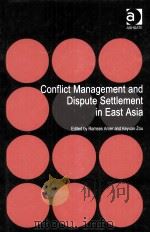《DISPUTE SETTLEMENT IN THE WORLD TRADE ORGANIZATION PRACTICE AND PROCEDURE》
| 作者 | DAVID PALMETER AND PETROS C.MA 编者 |
|---|---|
| 出版 | KLUWER LAW INTERNATIONAL |
| 参考页数 | 315 |
| 出版时间 | 1999(求助前请核对) 目录预览 |
| ISBN号 | 9041106340 — 求助条款 |
| PDF编号 | 813697988(仅供预览,未存储实际文件) |
| 求助格式 | 扫描PDF(若分多册发行,每次仅能受理1册) |
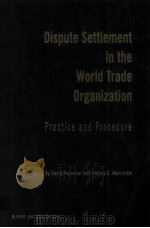
CHAPTER 1 The ITO, the GATT, and the WTO1
1.01 The ITO and the GATT1
[1] Bretton Woods and the Havana Charter1
[2] The negotiation of GATT2
[3] The Protocol of Provisional Application (PPA)3
[4] GATT’s 47 “provisional” years5
[5] GATT dispute settlement7
1.02 The Urugay Round11
1.03 The World Trade Organization13
1.04 The Dispute Settlement Body16
1.05 The Dispute Settlement Understanding17
CHAPTER 2 Jurisdiction19
2.01 Covered agreements19
[1] Conflicts among agreements19
[2] Simultaneous application of different agreements20
[3] Non-application between particular Members20
2.02 Non-Member countries or territories21
2.03 Regional and local government measures22
2.04 Requirement of a legal interest23
2.05 Measures as applied vs.measures as such24
2.06 Discretionary measures25
2.07 Measures changed during proceedings26
2.08 Change in legal justification for a measure27
2.09 Measures no longer in effect27
2.10 Exhaustion of local remedies30
2.11 Terms of reference30
2.12 Participation by amicus curiae32
CHAPTER 3 Sources of Law35
3.01 Overview35
3.02 Covered agreements37
3.03 Reports of prior panels and the Appellate Body37
[1] Adopted and unadopted panel reports38
[2] Appellate Body Reports45
3.04 Custom48
3.05 Teachings of the most highly qualified publicists49
3.06 General principles of law51
3.07 Other international agreements52
[1] Agreements referred to in the WTO Agreements52
[2] Agreements between the parties54
[3] Agreements to which the WTO is a party60
CHAPTER 4 The Panel Process61
4.01 Overview61
4.02 Consultations62
[1] Form and content of the request62
[2] Time elements63
[3] Confidentiality63
[4] Adequacy of consultations64
[5] Third parties65
4.03 Good offices, conciliation and mediation65
4.04 Request for a panel66
[1] Time elements66
[2] Form and content67
4.05 Establishment of a panel68
4.06 Composition of panels68
[1] In general68
[2] Nominating panelists69
4.07 Terms of reference70
[1] Standard terms of reference71
[2] Special terms of reference72
4.08 Function, authority and responsibilities of panels72
4.09 Third parties and multiple complainants73
[1] Third parties73
[2] Multiple complaints74
4.10 Counter-complaints75
4.11 Role of the Secretariat75
4.12 Evidence and experts76
[1] General76
[2] Experts77
[3] Subsequent evidence79
[4] Municipal law80
[5] Quantum of evidence80
4.13 Burden of proof81
[1] General81
[2] “General rule-exception” analysis83
4.14 Confidential information85
4.15 Standard of review85
4.16 Claims and defenses not raised86
[1] Claims86
[2] Defenses87
4.17 First written submissions87
4.18 First meeting of the panel88
4.19 Second written submissions90
4.20 Second meeting of the panel90
4.21 Interim reviews91
[1] Descriptive portions of the report91
[2] Full interim report91
[3] Request for further review92
4.22 Computation of time92
4.23 “Non-violation” complaints and complaints involving “other” situations94
4.24 Representation by private attorneys96
CHAPTER 5 Special Rules and Procedures99
5.01 Overview99
5.02 Developing countries99
5.03 The 1966 Understanding100
[1] Consultations100
[2] Good offices, conciliation, and mediation101
[3] Establishment of panels101
[4] Panel procedures102
5.04 Other Developing Country Provisions of the DSU102
[1] Consultations102
[2] Panel process102
5.05 Agreement on the Application of Sanitary and Phytosanitary Measures103
5.06 Agreement on Technical Barriers to Trade104
5.07 Agreement on Implementation of Article Ⅵ of GATT 1994(Antidumping Agreement)106
[1] General106
[2] Standard of Review107
[3] Confidential information109
[4] Overlap with countervailing duties109
5.08 Agreement on Implementation of Article Ⅶ of GATT 1994 (Customs Valuation Agreement)110
5.09 Agreement on Subsidies and Countervailing Measures111
[1] Prohibited subsidy procedures111
[2] Procedures before the Permanent Group of Experts112
[3] Actionable subsidy procedures114
[4] Procedures for developing information concerning serious prejudice115
[5] Multiple subsidy procedures117
[6] Non-actionable subsidies118
[7] Countervailing measures119
[8] Developing countries119
5.10 Agreement on Textiles and Clothing (ATC)120
[1] Overview120
[2] ATC Procedures122
[3] Textiles Monitoring Body Working Procedures125
5.11 General Agreement on Trade in Services (GATS)126
[1] General126
[2] Double taxation treaties126
[3] Non-violation nullification and impairment127
[4] Modification of schedules127
[5] Air transport services128
5.12 Agreement on Trade-Related Aspects of Intellectual Property Rights (TRIPS)128
5.13 Agreement on Government Procurement129
[1] Background129
[2] Proposals and DSU notification129
[3] DSB authority130
[4] Terms of reference130
[5] Time limits130
[6] No cross-retaliation131
5.14 Agreement on Trade in Civil Aircraft131
5.15 Arbitration132
[1] Generally132
[2] Non-actionable subsidies133
[3] Services134
CHAPTER 6 The Appellate Process135
6.01 Overview135
6.02 Right of appeal135
6.03 Appellate Body Rules136
[1] Overview136
[2] Divisions of the Appellate Body136
[3] Decision making and collegiality137
[4] Documents137
[5] Commencement of an appeal138
[6] Working schedule139
[7] Appellant’s submission139
[8] Appellee’s submission140
[9] Multiple appeals141
[10] Third participants142
[11] Record on appeal142
[12] Oral hearing143
[13] Written responses to questions143
[14] Failure to appear and withdrawal of appeal143
[15] Prohibited subsidy cases144
[16] Representation by private attorneys144
6.04 Time elements144
[1] Limits imposed by the DSU145
[2] Limits imposed by the Appellate Body146
[3] Timing - tactical considerations146
6.05 Lack of remand authority147
CHAPTER 7 Adoption and Implementation of Reports153
7.01 Overview153
7.02 Consideration and adoption of reports153
7.03 Notification of implementation intentions154
7.04 “Reasonable period of time”155
7.05 Disputes regarding implementation158
7.06 Surveillance by the DSB158
7.07 Prohibited and actionable subsidies159
7.08 “Other Situation” Complaints160
CHAPTER 8 Remedies161
8.01 Overview161
8.02 GATT Practice161
8.03 WTO Practice163
[1] General163
[2] “Suggested steps”164
[3] Adequacy of implementation165
8.04 Overview: compensation and suspension of concessions166
8.05 Negotiations on compensation167
8.06 Suspension of concessions168
[1] Request for authorization to suspend concessions169
[2] Principles and procedures governing suspension169
[3] Objection to suspension and referral to arbitration171
8.07 Prohibited and actionable subsidies172
8.08 “Other Situation” Reports172
CHAPTER 9 Conclusion175
Table of Cases177
Bibliography183
Appendices187
A Understanding on Rules and Procedures Governing the Settlement of Disputes187
B Working Procedures for Appellate Review219
C Working Procedures for Permanent Group of Experts (Draft)245
D Procedures forArbitration Under Article 8.5 of the SCMAgreement265
Dispute Settlement Provisions in Other Agreements:273
E Agreement on the Application of Sanitary and Phytosanitary Measures273
F Agreement on Textiles and Clothing275
G Agreement on Technical Barriers to Trade283
H Agreement on Implementation ofArticle Ⅵ of GATT 1994 (Antidumping Agreement)285
I Agreement on Implementation ofArticle Ⅶ of GATT 1994 (Customs Valuation Agreement)287
J Agreement on Subsidies and Countervailing Measures289
Applicable GATT Instruments297
K Procedures Under Article ⅩⅩⅢ, Decision of 5 April 1966297
L Decision of 12 April 1989301
M 28 November 1979 Understanding Regarding Notification, Consultation, Dispute Settlement and Surveillance303
Other Treaty Provisions305
N Vienna Convention on the Law of Treaties, Articles 31and 32305
Index307
1999《DISPUTE SETTLEMENT IN THE WORLD TRADE ORGANIZATION PRACTICE AND PROCEDURE》由于是年代较久的资料都绝版了,几乎不可能购买到实物。如果大家为了学习确实需要,可向博主求助其电子版PDF文件(由DAVID PALMETER AND PETROS C.MA 1999 KLUWER LAW INTERNATIONAL 出版的版本) 。对合法合规的求助,我会当即受理并将下载地址发送给你。
高度相关资料
-
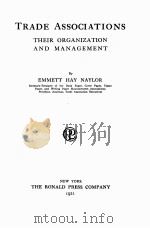
- TRADE ASSOCIATIONS THEIR ORGANIZATION AND MANAGEMENT
- 1921 THE RONALD PRESS COMPANY
-

- THE WORLD TRADE ORGANIZATION:CONSTITUTION AND JURISPRUDENCE
- 1998 ROYAL INSTITUTE INTERNATIONAL AFFAIRS
-
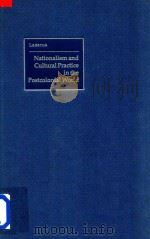
- Nationalism And Cultural Practice In The Postcolonial World
- 1999 Cambridge University Press
-
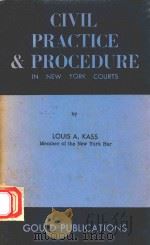
- CIVIL PRACTICE AND PROCEDURE IN NEW YORK COURTS
- 1963 GOULD PUBLICATIONS
-
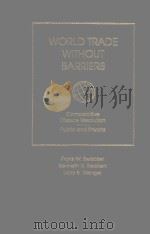
- WORLD TRADE WITHOUT BARRIERS COMPARATIVE DISPUTE RESOLUTION-PUBLIC AND PRIVATE VOLUME 2
- 1996 THE MICHIE COMPANY
-
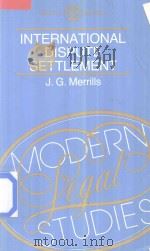
- International Dispute Settlement
- 1984 Sweet & Maxwell
-
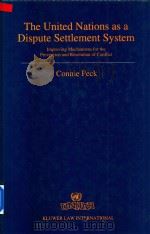
- The United Nations As a Dispute Settlement System : Improving Mechanisms for the Prevention and Reso
- 1996 Kluwer Law International
-

- LEGAL INSTITUTIONS THE DEVELOPMENT OF DISPUTE SETTLEMENT
- 1984 BUTTERWORTHS
-

- INDUSTRIAL TRIBUNALS-PRACTICE AND PROCEDURE
- 1980 BUTTERWORTHS
-

- The future of world trade in textiles and apparel
- 1987 Institute for International Economics
-
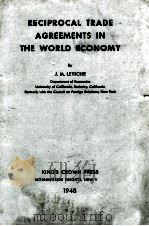
- RECIPROCAL TRADE AGREEMENTS IN THE WORLD ECONOMY
- 1948 KING’S CROWN PRESS
-
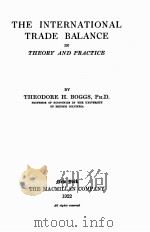
- THE INTERNATIONAL TRADE BALANCE IN THEORY AND PRACTICE
- 1922 THE MACMILLAN COMPANY
提示:百度云已更名为百度网盘(百度盘),天翼云盘、微盘下载地址……暂未提供。➥ PDF文字可复制化或转WORD
